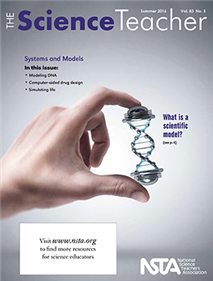All Safety resources
Blog Post
The Requirements of Emergency Showers and Eyewash Stations
Most science teachers know that emergency showers and eyewash stations are needed in the presence of potential biological, chemical, and physical hazards. But which ones should they choose, and how should they be installed, operated, and maintained? ...
By Kenneth Roy
Blog Post
Many of the chemicals on the Department of Homeland Security’s Anti-Terrorism Standards Chemicals of Interest List can be found in high school storerooms. These chemicals may be prone to theft and unauthorized lab experiments. Some terrorist websit...
By Kenneth Roy
Blog Post
Making a Checklist for Safer Labs
A lab safety checklist can serve as a map to help science teachers navigate through safer waters....
By Kenneth Roy
Blog Post
Like science labs, STEM (science, technology, engineering, and math) labs require safety and security measures, with an emphasis on safety training, personal protective equipment (PPE), standard operating procedures, engineering controls, and supervi...
By Kenneth Roy
Blog Post
Avoiding Electrical Hazards in the Lab
In science, technology, engineering, and math (STEM) labs, teachers and students can be exposed to a number of electrical hazards such as damaged electrical receptacles, missing ground prongs, and faulty electrical equipment. These hazards can result...
By Kenneth Roy
Blog Post
A Three-Step Method for Safer Labs
The lab can be an unsafe place. Under NSTA’s Duty of Care, however, the teacher is required to make labs safer (see Resources). One way of doing so is to follow the analysis, assessment, and action (AAA) method. The method requires teache...
By Kenneth Roy
Blog Post
The Harmful Particles in 3-D Printers
As three-dimensional printers are starting to become more common in science, STEM (science, technology, engineering, and math), and Fab labs, recent research indicates that 3-D printers pose serious health and safety concerns....
By Kenneth Roy
Blog Post
9 Housekeeping Tips for Science Educators
A clean lab is a safer lab. These nine housekeeping tips can help science teachers reduce the risk of lab accidents. 1. Location, location, location. Keep all lab equipment and materials in assigned places, such as cabinets and drawers, with label...
By Kenneth Roy
Blog Post
An Acknowledgment Form Is Safer Than a Contract
The school year is well under way. But before students enter science labs, they must turn in a safety acknowledgment form. After completing introductory safety training, as noted in NSTA’s Duty of Care (NSTA 2014), review and have students and t...
By Kenneth Roy
Blog Post
According to a recent article in Safety + Health magazine, Honeywell Safety Products had to recall about 9,700 bottles of Eyesaline emergency eyewash solution due to “a low risk of contamination” of bacteria that can cause eye infections (NSC 201...
By Kenneth Roy
Blog Post
Preventing Overcrowding in K–12 Science Labs
Of all the safety concerns expressed by science teachers, class size is high on the list. Thus, occupancy loads in science laboratories should be restricted to create and maintain a safer learning environment....
By Kenneth Roy
Blog Post
Starting the New School Year: Seven Safer Science Strategies
Before starting the new school year, in terms of safety, a little planning can go a long way. Science teachers, supervisors, and administrators should check out the Safer Seven checklist below for strategies that improve laboratory safety. Know...
By Kenneth Roy
Journal Article
Safer Science: Student Tests for Safer Labs
This column provides best safety practices for the science classroom and laboratory. This month’s issue discusses the use of safety tests to help students demonstrate their proficiency in lab safety....
Blog Post
Welcome to the NSTA Safety Blog
As NSTA’s chief science safety compliance adviser, I look forward to sharing the latest safety compliance information, while helping teachers solve safety-related problems and issues in the classroom, lab, and maker space. I’m also looking forwar...
By Kenneth Roy



